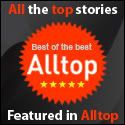ROI on Training and Leadership programs
Training evaluation usually takes into account the following factors.
• Reaction-How the participants reacts to the program
• Learning-Depending upon the nature of the program ways to measure the learning has to be worked out.
• On Job behavior -To access the effective changes for the desired result on the team and the individual.
• Business result-how the change in behavior has positively impacted business result.
• Calculating the return on investment (ROI).
Most of the organizations focus only till stage 4 of the evaluation process. Typically there are 3 aspects which are considered to be looked at under ROI.
• Desired Impact- has the training program been effective it facilitating change as it was desired. Training is one of the many tools available; it must justify its effectiveness as a viable business solution to remain relevant and viable.
• Cost –to substantiate that the cost incurred leads to positive impact of profitability.
• Improve the design and content of future training programs on the basis of feedback received.
The best way to evaluate the ROI on training is to do a control group experiment and evaluate the performance of both the teams on the basis of pre identified hard and soft data points like absenteeism, productivity, morale, enthusiasm etc. Only if the pre determined targets are achieved for the group which has undergone training is evident it would be viable to have effective ROI assessment. However ROI assessment has its own challenges since the effectiveness also depends on individual willingness and openness to change behavior through structured intervention.
In my personal experience the best training programs are run by people who have demonstrated exceptional leadership ability and have proven track record of being a performer and great achiever in any field of life. Only those who are exceptional achievers can inspire others raise the bar and achieve new heights.
New Skills for HR Professionals
HR function in itself is the core of any entrepreneur activity. For any organization to be effective it needs great managers and great managers must be great team leaders having exceptional people capabilities. However Marketing (Business development and Sales) and finance are two functions which HR professionals must have to become quite essential entrepreneurs. In one of my earlier post on my blog I had opined on “
selling skills for HR professionals”. Cross functional expertise is a core competency for HR professional as it is involved in Hiring, training, mentoring, developing career path and designing robust performance management system and policies for all functions in the organizations. Unless it has the necessary know how of business, functional, operational and strategic goals of teams it will never succeed in performing its role effectively.
Perceptions about HR department
Depends on what we are trying to achieve, we keep reading lot of surveys and findings on the role of HR in organizations and what is expected from HR teams .Perception of employees will change only if the expectations are aligned to the common goal. As long as HR leadership in your teams are able to differentiate and successfully execute the employee value proposition and integrate the same with organizations people’s philosophy ,in my view it would have done its core function.
HR must re-define and change the way it sees itself, it ought to articulate its business value proposition and strategic contribution more effectively. It should become a viable change agent in driving the strategic goal of organizations. Only when these goals are achieved we can expect changes in the way HR function is perceived.






